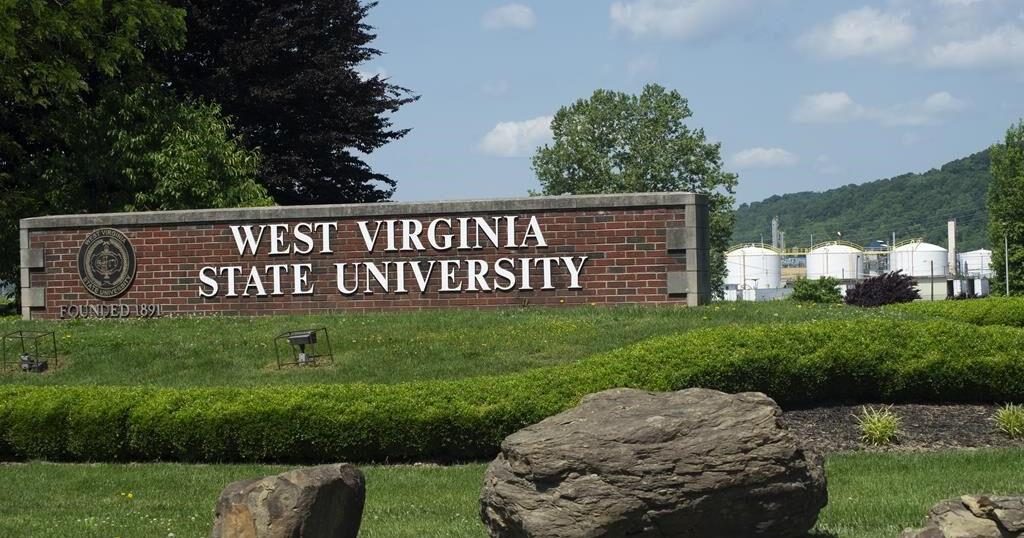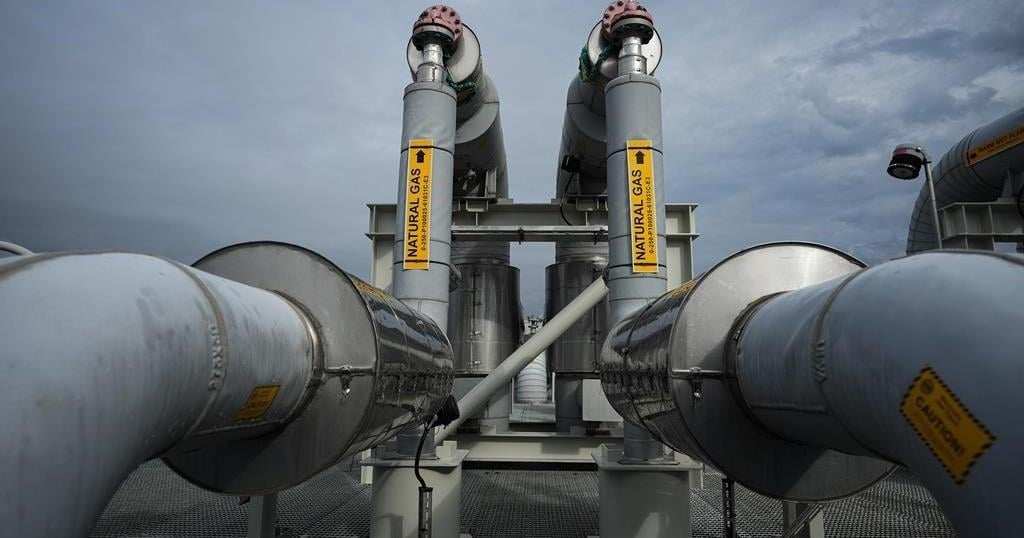A month ago, the director-general of the World Health Organization made optimistic statements about the pandemic’s end, stating that a finish line was on the horizon.
“We are not there yet, but the end is in sight,” said Tedros Adhanom Ghebreyesus during a media briefing on Sept. 14.
But what would it take to get to that end? Ghebreyesus emphasized that now is the time to “run harder” and now would be the “worst time” to stop running. He specified that countries should not ease up on multiple health interventions and policies needed to continue to fight COVID-19.
Those policies are recommended to nations in the form of six briefs that were published at the time of the press conference.
They are: maintaining COVID-19 testing, clinical management of COVID-19, reaching COVID-19 vaccination targets (while prioritizing high-risk groups), maintaining infection prevention and control measures in health-care facilities, building trust through community engagement, and managing the COVID-19 “infodemic” to combat misinformation.
The WHO has also warned this fall that it expects new waves to be driven by emerging variants of concern and subvariants that scientists are keeping a close eye on, as some have significant immune-system evading elements.
The latest epidemiological update the WHO published on Oct. 19 indicates that globally, cases declined six per cent the week of Oct. 10 to 16, with 2.9 million cases reported.
However, the WHO cautions in its report that many countries have changed their testing strategies and fewer tests are being performed, with fewer cases being caught.
Although the decline reported in the latest WHO update is positive news, it still comes with the caveat that a total of 618 million confirmed cases and 6.5 million deaths have been reported globally since the beginning of the pandemic, and the numbers are likely higher based on cases and deaths that go undocumented.
As well, the global south is continuing to face vaccine supply issues and inequities that have led to devastating consequences in multiple nations, and the virus is not set to be endemic anytime soon, according to a recent editorial in Nature Human Behaviour.
The WHO also says that several countries are still reporting hundreds of thousands of new cases a week, including Germany, France, China and Italy.
In Canada, the latest COVID-19 update on Oct. 14 indicates that about 20,000 new cases were reported the week prior. Between Oct. 10 and Oct.17, the number of people hospitalized increased from 3,550 to 3,875, following a steady upward trend in hospitalizations since the start of October.
While Canada has seen some success in combating the pandemic, due to being able to procure vaccines and implement border control measures and masking mandates that have since been lifted, several areas urgently need to be improved on, or the pandemic will be prolonged in the country, infectious disease experts told CTVNews.ca.
With new subvariants emerging, hospital systems collapsing in some regions, and some fatigue around booster doses, there’s more that can be done to avoid getting off track, they said.
AIR QUALITY AND HOSPITAL CRISIS
Colin Furness, an infection control epidemiologist at the University of Toronto, told CTVNews.ca that what is alarming to him is that the WHO hasn’t emphasized the need for indoor air quality improvements.
In the WHO’s “maintaining infection prevention” brief, published Sept. 14, the organization includes information about the importance of implementing environmental and engineering controls in health-care settings, with an emphasis on ventilation, and touches on air quality improvement needs.
Furness said the WHO should have more public, direct emphasis on airborne controls and because it took two years for the organization to acknowledge the disease is airborne, that impacted countries like Canada, where those measures are not implemented in places such as Ontario’s hospitals, he said.
It took nearly two years into the pandemic for Ontario’s top doctors to acknowledge that COVID-19 is airborne and the acknowledgment came after many health agencies and health-care providers called on the government to adopt airborne transmission protocols.
When asked whether Ontario hospitals have protocols centred on airborne COVID transmission, the Ontario Hospital Association, which represents 154 public hospitals in the province, told CTVNews.ca that a directive issued in the fall of 2020 to get hospitals to comply with COVID-19 measures has since been replaced with guidelines from the Ministry of Health. Those guidelines “provide direction to all health care workers and health care entities on infection prevention and control (IPAC) and personal protective equipment (PPE) measures for COVID-19,” the OHA said in an email.
According to the province’s hospital guidelines, patients who have or are suspected to have COVID-19 and will be undergoing medical procedures that could place health-care workers at risk, should be placed in airborne infection isolation rooms. If those aren’t available, thepatient should be placed in a single room with the door closed.
As well, HEPA filters can be placed into a patient’s room for additional filtration and windows should be opened if possible, the guidelines state.
Other provinces like B.C. and Alberta were similarly criticized for not approaching COVID-19 as an airborne virus. However, officials in provinces like Manitoba spoke about making adjustments to their COVID-19 strategies in spring 2021 to incorporate acknowledging airborne transmission.
In recent months, some hospitals in Ontario, Manitoba, British Columbia and Atlantic provinces have had to shutter their emergency departments or reduce ER hours due to the ongoing effects of the pandemic and staffing shortages, exacerbating delays in an already-overwhelmed health-care system.
For Canada, the next steps involve determining how to live with COVID– and the most important factor is acknowledging that COVID-19 is airborne and adjusting policies accordingly, said Furness.
“COVID is airborne and is a systemic disease,” he said. “Until we’re able to say that, we can’t expect the field of medicine to take long-COVID seriously.”
Until air quality controls are implemented more seriously with strict public policy changes, including mandatory improved ventilation, “we’re not going to win,” said Furness.
Currently,the Public Health Agency of Canadahas recommendations onindoor ventilation and provides guidance, but does not mandate standards on ventilation.
Ventilation standards in schools continue to be a discussion across the country. In B.C., the province recommended that schools maintain their ventilation systems and open windows, but said portable HEPA filters were “not necessary.”
However in Ontario, the province has provided more than 49,000 filters for schools and child-care settings, indicating different approaches depending on the jurisdiction.
The number one goal should be addressing the wider system issues with hospitals and health care in Canada, as those problems will aggravate any COVID-19 wave and create worse outcomes for the population in general, said Dr. Sumon Chakrabarti, an infectious disease physician with Trillium Health Partners in Mississauga, Ont.
LOW BOOSTER UPTAKE
As of Oct. 17, about 80 per cent of Canada’s population has had a primary series of a COVID-19 vaccine, but booster dose rates are far below that. About 17 per cent of the population has had a booster dose in the last six months.
“If I’m talking with people who have no scientific or clinical background…they will say [COVID] is like the flu….so why do I have to go get vaccinated again?” said Horacio Bach, a clinical assistant professor in the Division of Infectious Diseases at the University of British Columbia.
Having a population that is not taking up booster shots, especially the bivalent vaccine that specifically targets Omicron, leaves many people open to reinfection and the possibility of long-COVID, said Bach.
“We’ve seen a lot of new variants recently, it’s hard to follow them. Those variants can escape the immune system…and continue to infect,” he said.
One study estimates that nearly 30 per cent of the population was infected during an Omicron wave in early 2022, and the National Advisory Committee on Immunization advises that an individual waits at least three months after an infection to receive the booster shot.
The people who need booster shots the most are those at high risk and older people, said Chakrabarti.
Focusing resources on people who have a greater risk of becoming hospitalized or dying should be the priority when it comes to testing and being targeted for the booster shots, he said.
Canada needs to approach the WHO’s policies with a “different perspective” than it may have two years ago, due to its immunized population, he added.
“COVID is still an issue and I’m still seeing patients face-to-face…and it’s different [compared to 2020],” he said. In 2020, if he saw a patient over 85 with COVID-19 it was considered a death sentence. But with the widespread vaccination, he’s been happy to see older people be able to recover at home. “That context is important- look at what’s actually happening in the clinical scenario,” he said.
INDOOR MASK USE
The only protection available other than vaccines are masks, said Bach.
In research published in January 2022, Bach and other researchers found that surgical and N95 masks were up to 95 per cent effective at reducing viral particles that pass through the mask layers.
And with the upcoming cold weather that will drive people into more indoor settings, mask use could be an easy barrier against infection, said Bach. But he acknowledges it will likely be very difficult to convince people to put masks back on after mask mandates have been lifted.
Last week, Ontario’s top doctor Dr. Kieran Moore warned he will make more recommendations on masking as a “difficult winter” is ahead when it comes to COVID-19.
“Now we are going through the cold weather and all the events will be indoors, and nobody will use masks,” said Bach.
Schools are incubators for COVID-19, and without masking requirements there either, the next few months could go badly, he explained.
Communication is one of the most important factors that the WHO has listed, and there are some shifts the government could take to increase trust, said Chakrabarti.
More clear messaging, from media and the government about why the bivalent vaccine is beneficial and necessary will help better prepare Canada for the fall and winter, added Bach. Especially as recent data has shown how long-COVID can impact people and hospital systems.
“The government, I think they need to implement a way to communicate directly…just saying ‘get the bivalent’ is not helping. You have to explain further,” he said.
Source link
Related






















